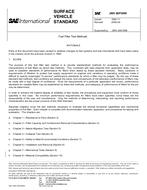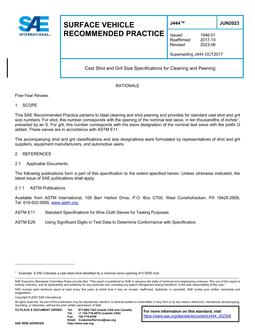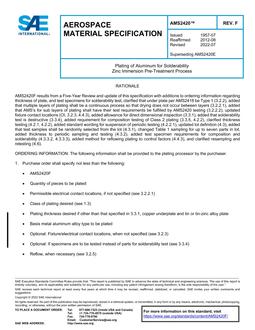
SAE J905_200909
- Comments Off on SAE J905_200909
- SAE
The purpose of this fuel filter test method is to provide standardized methods for evaluating the performance characteristics of fuel filters by bench test methods. This, combined with data obtained from application tests, may be used to establish standards of performance for filters when tested by these standard methods. Many variations in requirements of filtration to protect fuel supply equipment on engines and variations in operating conditions make it difficult to specify meaningful “in-service” performance standards by which a filter may be judged. By the use of these standard test methods, test conditions are always the same, and comparisons of the laboratory performance of filters may be made with a high degree of confidence. Once the requirements of a particular application are known, performance standards for suitable filters may be established by these test methods, and adequacy of performance of filters for the job may be determined.
In order to achieve the highest degree of reliability of test results, the procedures and equipment must conform to those specified in this code. No minimum performance requirements for filters have been specified, since these are the responsibility of the user and manufacturer. Only the methods of determining, interpreting, and reporting performance characteristics are the proper province of this SAE Standard.
Separate chapters cover the test methods necessary to evaluate the several functional capabilities and mechanical properties of the filter. Each chapter is complete with recommended materials, apparatus, and procedures for testing and evaluation. The chapters are:
-
Chapter 1—Resistance to Flow (Section 3)
-
Chapter 2—Filter Capacity and Contaminant Removal Characteristics (Section 4)
-
Chapter 3—Media Migration Test (Section 5)
-
Chapter 4—Collapse Test (Section 6)
-
Chapter 5—Ability to Meet Environmental Conditions (Section 7)
-
Chapter 6—Installation and Removal (Section 8)
-
Chapter 7—Mechanical Tests (Section 9)
-
Chapter 8—Material Compatibility (Section 10)
To simplify the chapters covering test methods, information of importance but not directly involved in test methods is covered in appendices as follows:
-
Methods for Sample Analysis (Appendix A)
Product Details
- Published:
- 09/01/2009
- File Size:
- 1 file , 260 KB




